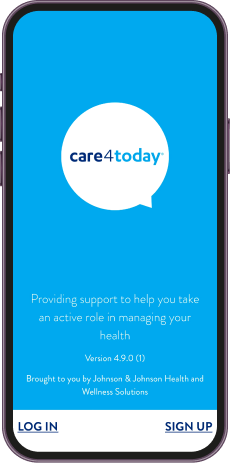Care4Today®
Managing PAH can be challenging. Between medications, appointments, and activities, it can be easy to lose track of it all. Care4Today® Connect is a tool designed specifically for patients like you to help you:
- Understand your condition and take actionable steps toward improving your physical and mental health
- Keep track of medical appointments and medications
- Monitor important aspects of your health, including your activity level, fluid intake, weight, functional class, and more
- Share how you’re tracking towards your goals to have more productive conversations with your healthcare team
- Some healthcare professionals treating PAH may be able to see information shared in the app for people who opt in. Ask your doctor if they can connect to your information so they can better understand how your PAH affects you






